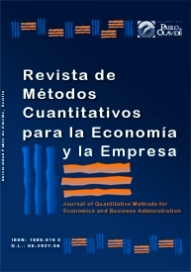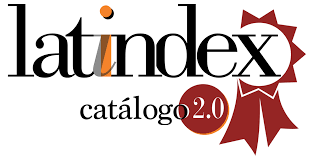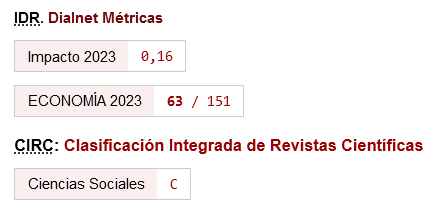Las claves ocultas de la satisfacción del cliente en el floreciente sector de la cocina en nube de Bangladesh
DOI:
https://doi.org/10.46661/rev.metodoscuant.econ.empresa.10517Palabras clave:
Cocinas en la nube, Satisfacción del cliente, Rapidez de entrega, Calidad, Atención al cliente, Comparación social, Estrategia de preciosResumen
Este estudio explora los factores influyentes en la satisfacción del consumidor en el negocio de la cocina en la nube en Bangladesh. Hemos analizado cómo afectan a la satisfacción factores como el precio, la calidad, la velocidad de entrega, el servicio al cliente y la comparación social. El objetivo de este estudio es conocer en profundidad los factores que afectan significativamente a la satisfacción del consumidor en relación con el sector de la entrega de comida a domicilio. Para establecer relaciones, esta investigación utilizó un enfoque cuantitativo mediante un diseño no experimental. Los encuestados, seleccionados, dieron como resultado una muestra total de 308 personas. Los datos se recogieron mediante un cuestionario de encuesta y una escala Likert de 5 puntos, y se analizaron mediante procedimientos SEM. El estudio indica que criterios como el precio, la calidad, la rapidez de entrega, el servicio al cliente y la comparación social afectan predominantemente a la satisfacción del consumidor. Sin embargo, cuando la calidad y el servicio son excelentes, el coste pasa a ser irrelevante. El estudio ha examinado de nuevo el funcionamiento de la cocina en la nube en lo que respecta a la importancia del precio, la calidad, la velocidad de entrega, el servicio al cliente y la comparación social, junto con su efecto en la felicidad del consumidor. Difiere de los modelos habituales basados en el precio y traza territorios inexplorados; ofrece nuevas perspectivas en el mundo de las cocinas en nube.
Descargas
Citas
Adam, M. (2023). A Study on Factors Influencing Consumer Behaviour to Use Foodpanda in Malaysia. International Journal of Tourism and Hospitality in Asia Pasific, 6(1), 97-107. https://doi.org/10.32535/ijthap.v6i1.1888 DOI: https://doi.org/10.32535/ijthap.v6i1.1888
Ahmed, J., & Ahmed, A. (2018). Foodpanda: Changing the Way Bangladeshi Eat Meals. In Foodpanda: Changing the Way Bangladeshi Eat Meals (Issue SAGE Publications: SAGE Business Cases Originals.). SAGE Publications: SAGE Business Cases Originals.https://doi.org/10.4135/9781526444561 DOI: https://doi.org/10.4135/9781526444561
Ahmed, J. U. (2017). HungryNaki: Challenges of an Emerging Online Food Delivery Service in Bangladesh. In HungryNaki: Challenges of an Emerging Online Food Delivery Service in Bangladesh. SAGE Publications: SAGE Business Cases Originals.https://doi.org/10.4135/9781526409997 DOI: https://doi.org/10.4135/9781526409997
Ahmed, J. U., Talukdar, A., Faroque, A. R., & Ahmed, A. (2023). Cookups.com: An entrepreneurial initiative linking home kitchens to consumers. Journal of Information Technology Teaching Cases, 13(1), 88-96. https://doi.org/10.1177/20438869221094043 DOI: https://doi.org/10.1177/20438869221094043
Ahmed Khan, T., Arman Khan, S., Haque, S., & Ayub, Md. F. B. (2022). A Study on the Prospect of the Cloud Kitchen Model in Dhaka. International Journal of Business and Management, 18(1), 46. https://doi.org/10.5539/ijbm.v18n1p46 DOI: https://doi.org/10.5539/ijbm.v18n1p46
Ahmed, S., Al Asheq, A., Ahmed, E., Chowdhury, U. Y., Sufi, T., & Mostofa, Md. G. (2023). The intricate relationships of consumers' loyalty and their perceptions of service quality, price and satisfaction in restaurant service. The TQM Journal, 35(2), 519-539.https://doi.org/10.1108/TQM-06-2021-0158 DOI: https://doi.org/10.1108/TQM-06-2021-0158
Ahuja, A. (2020). Dark Kitchens: A Lowdown on The New Phenomenon in Food Delivery. In Web Page. https://food.ndtv.com/news/dark-kitchens-a-lowdown-on-the-new-phenomenon-in-food-delivery-2181341
Akmal, E., Panjaitan, H. P., & Ginting, Y. M. (2023). Service Quality, Product Quality, Price, Promotion, and Location on Customer Satisfaction and Loyalty in CV. Restu. Journal of Applied Business and Technology, 4(1), 39-54. https://doi.org/10.35145/jabt.v4i1.118 DOI: https://doi.org/10.35145/jabt.v4i1.118
Anderson, L. R., & Fishbein, M. (1965). Prediction of attitude from the number, strength, and evaluative aspect of beliefs about the attitude object: A comparison of summation and congruity theories. Journal of Personality and Social Psychology, 2(3), 437-443. https://doi.org/10.1037/h0022220 DOI: https://doi.org/10.1037/h0022220
Auad, R., Erera, A., & Savelsbergh, M. (2023). Courier satisfaction in rapid delivery systems using dynamic operating regions. Omega, 121, 102917. https://doi.org/10.1016/j.omega.2023.102917 DOI: https://doi.org/10.1016/j.omega.2023.102917
Bhattacharjee, J. (2023). Cloud Kitchens in Bangladesh: Future of Cloud Kitchen Business. In Web Page. https://businessinspection.com.bd/cloud-kitchen-business-in-Bangladesh-2/
Biswas, A., & Verma, R. K. (2023). Augmenting service quality dimensions: mediation of image in the Indian restaurant industry. Journal of Foodservice Business Research, 26(3), 496-527. https://doi.org/10.1080/15378020.2022.2027198 DOI: https://doi.org/10.1080/15378020.2022.2027198
Cankül, D., Kaya, S., & Kızıltaş, M. Ç. (2024). The effect of gastronomic experience on restaurant image, customer perceived value, customer satisfaction and customer loyalty. International Journal of Gastronomy and Food Science, 36, 100908.https://doi.org/10.1016/j.ijgfs.2024.100908 DOI: https://doi.org/10.1016/j.ijgfs.2024.100908
Cepeda-Carrión, I., Alarcon-Rubio, D., Correa-Rodriguez, C., & Cepeda-Carrion, G. (2023). Managing customer experience dimensions in B2B express delivery services for better customer satisfaction: a PLS-SEM illustration. International Journal of Physical Distribution & Logistics Management, 53(7/8), 886-912. https://doi.org/10.1108/IJPDLM-04-2022-0127 DOI: https://doi.org/10.1108/IJPDLM-04-2022-0127
Chandan, M. (2020). Behaviour of Students Towards Electronic Food Delivery Platforms. International Journal of Management and Humanities, 4(9), 89-95. https://doi.org/10.35940/ijmh.I0917.054920 DOI: https://doi.org/10.35940/ijmh.I0917.054920
Chinelato, F. B., Oliveira, A. S. de, & Souki, G. Q. (2023). Do satisfied customers recommend restaurants? The moderating effect of engagement on social networks on the relationship between satisfaction and eWOM. Asia Pacific Journal of Marketing and Logistics, 35(11), 2765-2784. https://doi.org/10.1108/APJML-02-2022-0153 DOI: https://doi.org/10.1108/APJML-02-2022-0153
Chng, S. (2024). The Emerging Socio-Spatial Implications of Cloud Kitchens and Cloud Stores. In The City Rebooted (pp. 185-210). WORLD SCIENTIFIC. https://doi.org/10.1142/9789811287848_0007 DOI: https://doi.org/10.1142/9789811287848_0007
Choudhary, N. (2019). Strategic Analysis of Cloud Kitchen - A Case Study. Management Today, 9(3), 184-190.https://doi.org/10.11127/gmt.2019.09.05 DOI: https://doi.org/10.11127/gmt.2019.09.05
Chowdhury, M. M., & Haider, M. H. (2020). Restaurant business and a pandemic. In Web Page. https://www.thedailystar.net/lifestyle/cover-story/news/restaurant-business-and-pandemic-1899493
da Cunha, D. T., Hakim, M. P., Alves, M. M., Vicentini, M. S., & Wiśniewska, M. Z. (2024). Dark kitchens: Origin, definition, and perspectives of an emerging food sector. International Journal of Gastronomy and Food Science, 35, 100884. https://doi.org/10.1016/j.ijgfs.2024.100884 DOI: https://doi.org/10.1016/j.ijgfs.2024.100884
Fornell, C., & Larcker, D. F. (1981). Structural Equation Models with Unobservable Variables and Measurement Error: Algebra and Statistics. Journal of Marketing Research, 18(3), 382-388. https://doi.org/10.1177/002224378101800313 DOI: https://doi.org/10.1177/002224378101800313
Fridayani, H. D., Iqbal, M., & Atmojo, M. E. (2021). Cloud Kitchen: Strategy for Indonesian Culinary Business (SMEs) Growth During and Post Pandemic Era. Management Research and Behavior Journal, 1(2), 41. https://doi.org/10.29103/mrbj.v1i2.5128 DOI: https://doi.org/10.29103/mrbj.v1i2.5128
Ghaderi, Z., Omidvar, M. S., Hosseini, S., & Hall, C. M. (2024). Corporate social responsibility, customer satisfaction, and trust in the restaurant industry. Journal of Foodservice Business Research, 1-32. https://doi.org/10.1080/15378020.2024.2318523 DOI: https://doi.org/10.1080/15378020.2024.2318523
Ginting, Y. M., Chandra, T., Miran, I., & Yusriadi, Y. (2023). Repurchase intention of e-commerce customers in Indonesia: An overview of the effect of e-service quality, e-word of mouth, customer trust, and customer satisfaction mediation. International Journal of Data and Network Science, 7(1), 329-340. https://doi.org/10.5267/j.ijdns.2022.10.001 DOI: https://doi.org/10.5267/j.ijdns.2022.10.001
Halstead, D. (1999). The Use of Comparison Standards in Customer Satisfaction Research and Management: A Review and Proposed Typology. Journal of Marketing Theory and Practice, 7(3), 13-26. https://doi.org/10.1080/10696679.1999.11501837 DOI: https://doi.org/10.1080/10696679.1999.11501837
Henseler, J., Ringle, C. M., & Sarstedt, M. (2015). A new criterion for assessing discriminant validity in variance-based structural equation modeling. Journal of the Academy of Marketing Science, 43(1), 115-135.https://doi.org/10.1007/s11747-014-0403-8 DOI: https://doi.org/10.1007/s11747-014-0403-8
Hosen, E. (2023). Cloud Kitchen Potentiality in Bangladesh [Centria University of Applied Sciences]. In Centria University of Applied Sciences. https://doi.org/https://urn.fi/URN:NBN:fi:amk-2023061524015
Hwang, J., & Choe, J. Y. (Jacey). (2019). Exploring perceived risk in building successful drone food delivery services. International Journal of Contemporary Hospitality Management, 31(8), 3249-3269. https://doi.org/10.1108/IJCHM-07-2018-0558 DOI: https://doi.org/10.1108/IJCHM-07-2018-0558
Inoni, O. R. (2024). Predictors of customer satisfaction in fast food restaurants. Economics and Management, 21(1), 199-213. https://doi.org/10.37708/EM.SWU.V21I1.13
Islam, R., Ahmed, S., Rahman, M., & Al Asheq, A. (2021). Determinants of service quality and its effect on customer satisfaction and loyalty: an empirical study of private banking sector. The TQM Journal, 33(6), 1163-1182. https://doi.org/10.1108/TQM-05-2020-0119 DOI: https://doi.org/10.1108/TQM-05-2020-0119
John, K. T. (2023). Digital disruption: the hyperlocal delivery and cloud kitchen driven future of food services in post-COVID India. International Hospitality Review, 37(1), 161-187. https://doi.org/10.1108/IHR-06-2021-0045 DOI: https://doi.org/10.1108/IHR-06-2021-0045
Kim, S. H., Lee, D. H., & Cannon, D. F. (2014). The Application of Evaluative Congruity Theory in Destination Loyalty. 관광연구저널, 28(10), 5-19. https://www.dbpia.co.kr/journal/articleDetail?nodeId=NODE06643060
Lahiri, S., Bose, I., & Majumdar, A. (2024). Rebel Foods' Cloud Kitchen Technologies: Food for Thought? Communications of the Association for Information Systems, 54(1), 155-179. https://doi.org/10.17705/1CAIS.05407 DOI: https://doi.org/10.17705/1CAIS.05407
Lapegna, P. (2016). The Dark Side of the Boom. In Soybeans and Power (pp. 24-51). Oxford University Press.https://doi.org/10.1093/acprof:oso/9780190215132.003.0002 DOI: https://doi.org/10.1093/acprof:oso/9780190215132.003.0002
Linder-Pelz, S. (1982). Toward a theory of patient satisfaction. Social Science & Medicine, 16(5), 577-582. https://doi.org/10.1016/0277-9536(82)90311-2 DOI: https://doi.org/10.1016/0277-9536(82)90311-2
Lorimor, E. S., & Dunn, S. W. (1968). Reference Groups, Congruity Theory and Cross-Cultural Persuasion. Journal of Communication, 18(4), 354-368. https://doi.org/10.1111/j.1460-2466.1968.tb00085.x DOI: https://doi.org/10.1111/j.1460-2466.1968.tb00085.x
Mehnaz, S., Baskar, M., & Venkteswar, P. A. (2021). Cloud Kitchens in India: A Research Paper. International Journal of Current Research, 13(05), 17325-17328. https://doi.org/10.24941/ijcr.41199.05.2021
Mordor Intelligence. (2023). Bangladesh Foodservice Market Size & Share Analysis - Growth Trends & Forecasts Up To 2030. In Web Page. https://www.mordorintelligence.com/industry-reports/bangladesh-foodservice-market/market-trends
Moyeenudin, H. M., Anandan, R., Parvez, S. J., & G, Bindu. (2020). A Research on Cloud Kitchen Prerequisites and Branding Strategies. International Journal of Innovative Technology and Exploring Engineering, 9(3), 983-987. https://doi.org/10.35940/ijitee.C8188.019320 DOI: https://doi.org/10.35940/ijitee.C8188.019320
Othman, M. S., Md Nor, N., & Rosdi, W. N. (2021). Impact of Ghost Kitchen Towards Consumer Behavioral Intention During Movement Control Order. Journal of Islamic, Social, Economics and Development, 6(6), 30-37.https://myjurnal.mohe.gov.my/filebank/published_article/112303/4.pdf
Paul, N. I. J., Sajnani, M., & Sharma, K. (2024). Effectiveness of Digital Marketing on Instagram: A Study on EatSure Multi-Brand Cloud Kitchen (pp. 268-279). Atlantis Press. https://doi.org/10.2991/978-94-6463-437-2_18 DOI: https://doi.org/10.2991/978-94-6463-437-2_18
Pookulangara, S., Wen, H., & Bharath, J. (2023). Consumer attitudes toward ordering from cloud kitchens: a gender and marital status perspective. International Journal of Contemporary Hospitality Management, 35(5), 1859-1879. https://doi.org/10.1108/IJCHM-03-2022-0310 DOI: https://doi.org/10.1108/IJCHM-03-2022-0310
Ragaa, D., Elbayomy, M., & Metwally, A. (2023). Social Comparison and Consumer Well-Being. Resmilitaris, 13(3), 3286-3314. https://resmilitaris.net/menu-script/index.php/resmilitaris/article/view/3995
Rout, A., Dawande, M., & Janakiraman, G. (2024). Cloud-Kitchens: Value Creation Through Co-Location. Production and Operations Management, 33(2), 512-529. https://doi.org/10.1177/10591478231224950 DOI: https://doi.org/10.1177/10591478231224950
Shahhosseini, M., & Khalili Nasr, A. (2024). What attributes affect customer satisfaction in green restaurants? An aspect-based sentiment analysis approach. Journal of Travel & Tourism Marketing, 41(4), 472-490. https://doi.org/10.1080/10548408.2024.2306358 DOI: https://doi.org/10.1080/10548408.2024.2306358
Sharma, R., & Kumar, V. (2024). Forecasting the future of cloud kitchen in the Indian restaurant industry and their impact on consumer decision making. Asian Journal of Management and Commerce, 5(2), 21-25. www.allcommercejournal.com
Srinivasan, V. P., Mohankumar, N., Prabakaran, T., Sairam, A., Elangovan, K., & Velmurugan, S. (2024). Cloud-Driven Collaborative Filtering and Waiter Robots Transforming Customer Experiences in Restaurants. 2024 International Conference on Advances in Modern Age Technologies for Health and Engineering Science (AMATHE), 1-6. https://doi.org/10.1109/AMATHE61652.2024.10582214 DOI: https://doi.org/10.1109/AMATHE61652.2024.10582214
Susilowati, E., Yuwono, A. A., & Leonnard, L. (2021). Cloud Kitchen Development Analysis in Food and Beverage Industry: A Case Study in Jakarta. RSF Conference Series: Business, Management and Social Sciences, 1(6), 29-39. https://doi.org/10.31098/bmss.v1i6.465 DOI: https://doi.org/10.31098/bmss.v1i6.465
Švancár, S., Chrpa, L., Dvořák, F., & Balyo, T. (2024). Cloud Kitchen: Using Planning-based Composite AI to Optimize Food Delivery Processes. http://arxiv.org/abs/2402.10725
Tualeka, S. H. (2024). Multi-Brand Virtual Restaurant: Cloud Kitchen Business Model (Case Study of PT. Sagala). Management Studies and Entrepreneurship Journal (MSEJ), 5(2), 4921-4931. https://doi.org/10.37385/MSEJ.V5I2.4770
Tulsian, A. (2021). Cloud Kitchens and The Future of Restaurants. In Web Page. https://www.posist.com/restaurant-times/features/cloud-kitchens-future.html
Twum, K. K., Kosiba, J. P. B., Hinson, R. E., Gabrah, A. Y. B., & Assabil, E. N. (2023). Determining mobile money service customer satisfaction and continuance usage through service quality. Journal of Financial Services Marketing, 28(1), 30-42.https://doi.org/10.1057/s41264-021-00138-5 DOI: https://doi.org/10.1057/s41264-021-00138-5
Upadhye, N., & Sathe, Dr. S. (2020). Cloud Kitchen-Case Study of Swiggy Cloud Kitchen in Pune. Mukt Shabd (UGC Care Journal), 06(04), 107-1014. https://www.mendeley.com/reference-manager/reader/0e4519d3-022b-3b9b-bd00-0df124b48f61/53367a9f-4c25-fa7d-731d-98acae9aeaaa
Vaughan, J. (2022). The Cloud Kitchen: Market Innovation and A Vertical Disintegration. In Master of Science in Marketing (pp. 1-24). https://www.proquest.com/openview/2bdd7bf9a7e1c5d52d571bf064d6796d/1?pq-origsite=gscholar&cbl=18750&diss=y
Wang, P. X., Kim, S., & Kim, M. (2023). Robot anthropomorphism and job insecurity: The role of social comparison. Journal of Business Research, 164, 114003. https://doi.org/10.1016/j.jbusres.2023.114003 DOI: https://doi.org/10.1016/j.jbusres.2023.114003
Xu, Y., Liu, X., Mao, Z. (Eddie), & Zhou, J. (2024). Mobile Food Ordering Apps, Restaurant Performance, and Customer Satisfaction. Cornell Hospitality Quarterly, 65(4), 497-508. https://doi.org/10.1177/19389655231223376 DOI: https://doi.org/10.1177/19389655231223376
Zaman Mir, M., & Shiraz Rahaman, A. (2005). The adoption of international accounting standards in Bangladesh. Accounting, Auditing & Accountability Journal, 18(6), 816-841. https://doi.org/10.1108/09513570510627720 DOI: https://doi.org/10.1108/09513570510627720
Descargas
Publicado
Cómo citar
Número
Sección
Licencia
Derechos de autor 2024 Md. Azizur Rahman, Salma Akter, Taj Ashrafi

Esta obra está bajo una licencia internacional Creative Commons Atribución-CompartirIgual 4.0.
El envío de un manuscrito a la Revista supone que el trabajo no ha sido publicado anteriormente (excepto en la forma de un abstract o como parte de una tesis), que no está bajo consideración para su publicación en ninguna otra revista o editorial y que, en caso de aceptación, los autores están conforme con la transferencia automática del copyright a la Revista para su publicación y difusión. Los autores retendrán los derechos de autor para usar y compartir su artículo con un uso personal, institucional o con fines docentes; igualmente retiene los derechos de patente, de marca registrada (en caso de que sean aplicables) o derechos morales de autor (incluyendo los datos de investigación).
Los artículos publicados en la Revista están sujetos a la licencia Creative Commons CC-BY-SA de tipo Reconocimiento-CompartirIgual. Se permite el uso comercial de la obra, reconociendo su autoría, y de las posibles obras derivadas, la distribución de las cuales se debe hacer con una licencia igual a la que regula la obra original.
Hasta el volumen 21 se ha estado empleando la versión de licencia CC-BY-SA 3.0 ES y se ha comenzado a usar la versión CC-BY-SA 4.0 desde el volumen 22.










